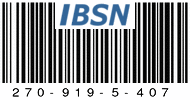The Austrian Bubna's 2nd Light Division fought at the battle of Sellerhausen. Formerly part of the Army of Bohemia, the division was transferred to the the Begninsen's Army of Poland in the previous weeks to the battle of Leipzig and forming the left flank of that Army, it linked with the Bernadotte's Army of the North.
The division included two Hussar regiments, the Liechtenstein No.7 and the Kaiser Franz No.1, assigned respectively to the first and second brigades.
The uniformes were the typical of the Austrian Hussars and the facings were
Jacket/Pelisse/Breeches: Kaiser: dark blue; Liechtenstein: light blue
Buttons/Lace: Kaiser: yellow; Liechtenstein: white
Shako: Kaiser: black; Liechtenstein: grass green
 In my collection of figures there is an Austrian Hussar unit: Stipsicz No. 10 Regiment, with the same facings than No.7 exception made from lace, so these units are exchageable with a small historical license!. However, the Kaiser No.1 Regiment is not amongst my units, so I will need to paint that unit.
In my collection of figures there is an Austrian Hussar unit: Stipsicz No. 10 Regiment, with the same facings than No.7 exception made from lace, so these units are exchageable with a small historical license!. However, the Kaiser No.1 Regiment is not amongst my units, so I will need to paint that unit.
There are not Napoleonic Austrian plastic sets in the market, so a conversion is mandatory. By searching into my pile of old acquisitions, I found a box of Airfix01743 Waterloo British Cavalry (Hussars) wearing their pelisse hanging, so they are a better choosing than other hussar alternatives such as the Revell 02586 French Hussars, wearing the pelisse over the dolman.
 However, the Airfix Hussars have busbies and not shakos, so I need also to swap heads with another figure. I'll use the same set than for the Gardes d'Honneur, i.e. HaT 8042 French Light Infantry, and the same technique than used in previous ocassions.
However, the Airfix Hussars have busbies and not shakos, so I need also to swap heads with another figure. I'll use the same set than for the Gardes d'Honneur, i.e. HaT 8042 French Light Infantry, and the same technique than used in previous ocassions.






 I hope the Austrian reinforcements will arrive in time to fight the French at Sellerhausen!
I hope the Austrian reinforcements will arrive in time to fight the French at Sellerhausen!




















































